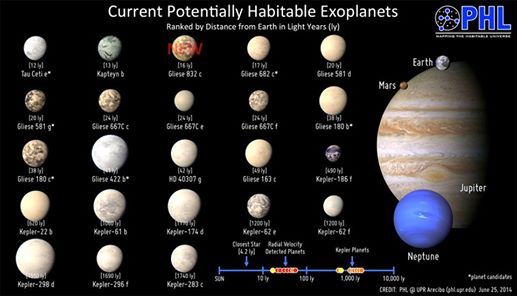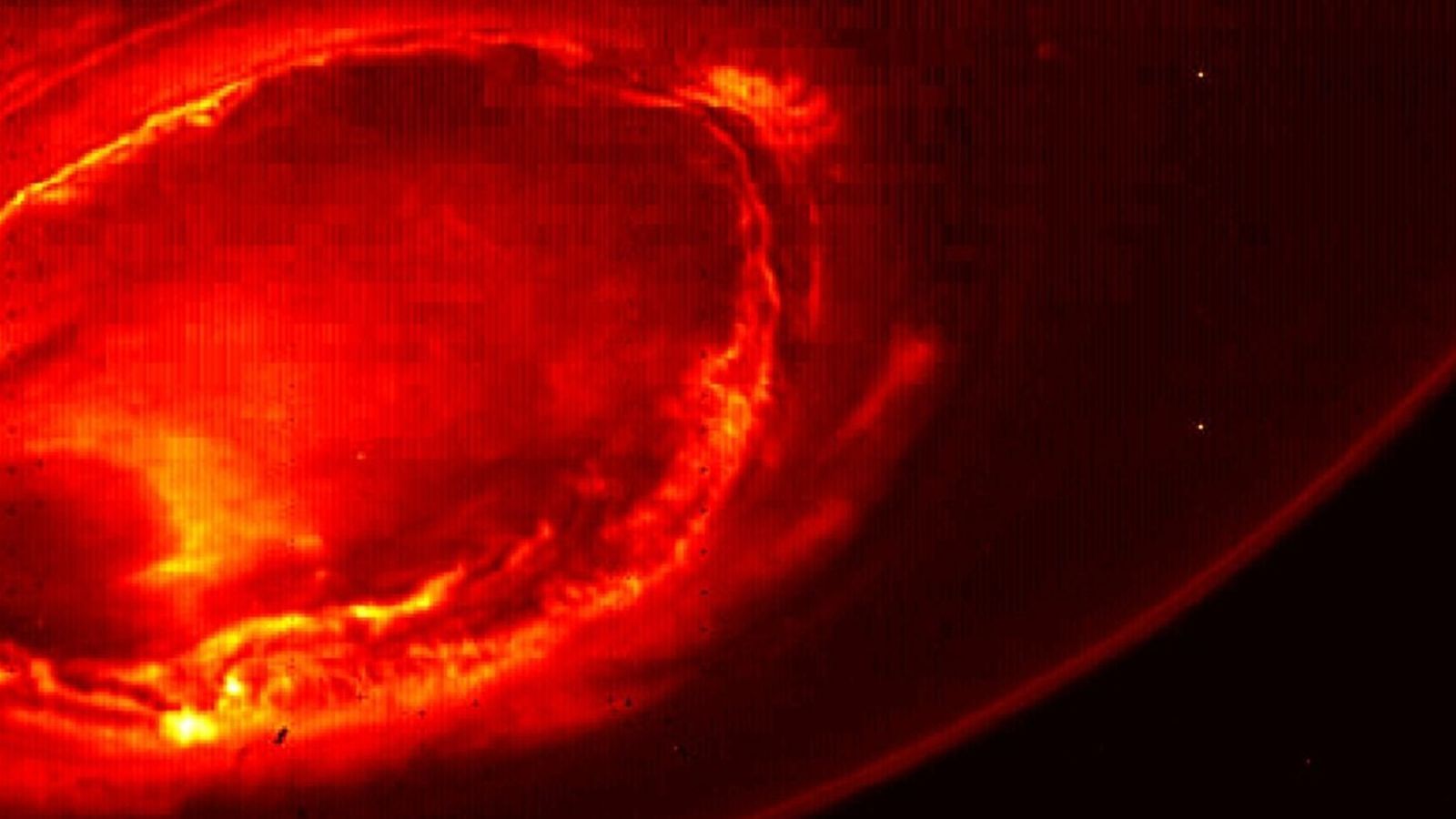Scientists can’t take pictures of the Higgs boson. But they can find proof of its existence by watching “E=mc” play out in hundreds of millions of particle collisions per second and detecting how it decays into other particles they do know how to spot. Now, six years after officially discovering the Higgs boson, particle physicists are announcing that they’ve spotted the Higgs in another way.
This announcement isn’t a surprise. It matches the predictions of the Standard Model of particle physics, the rock-solid but probably incomplete blueprint of the Universe on the smallest scales. But the news is certainly important; you might say it closes the first chapter of the Higgs boson’s story, and offers a potential window to explore some of most confounding questions in the Universe.
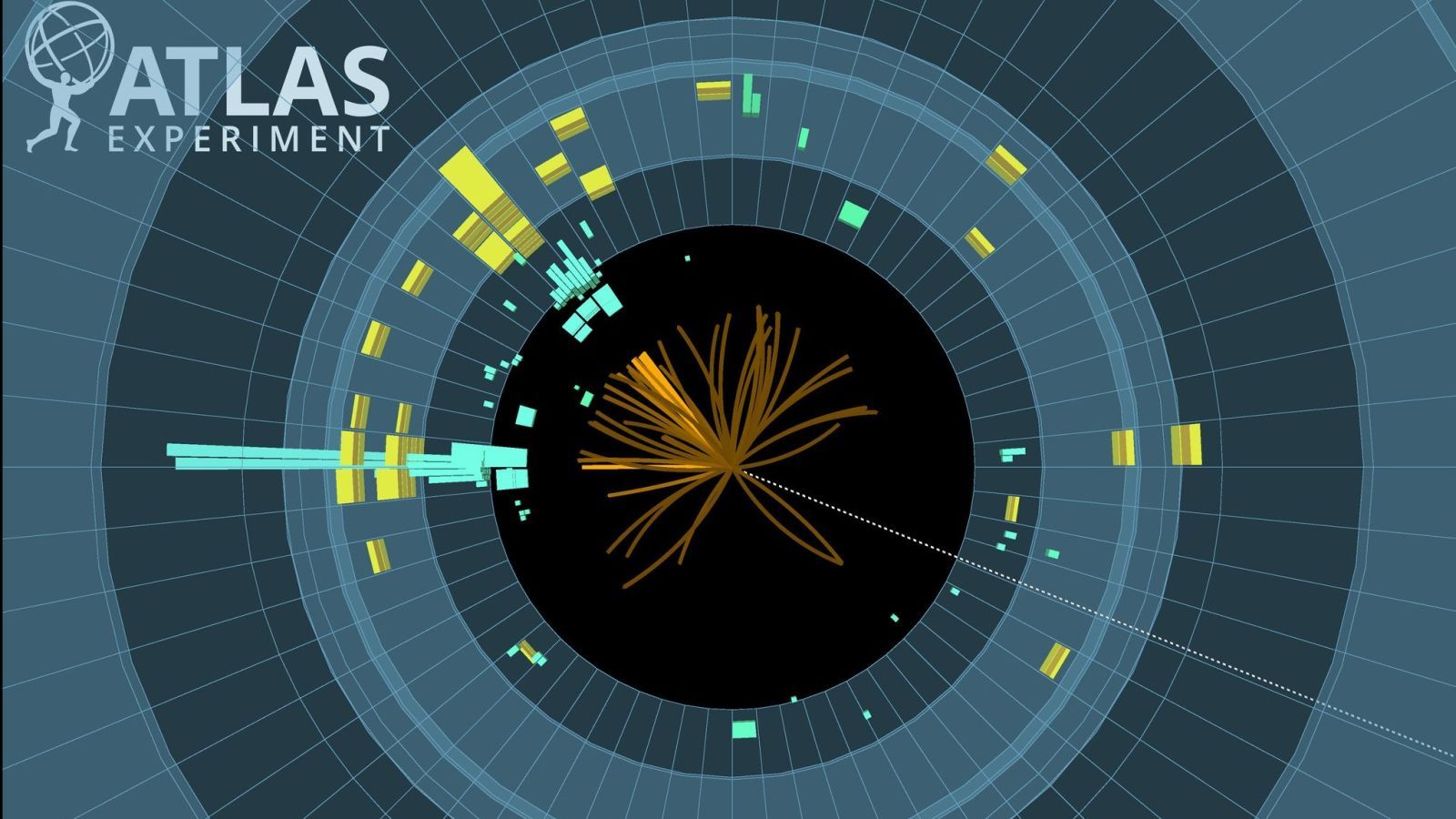
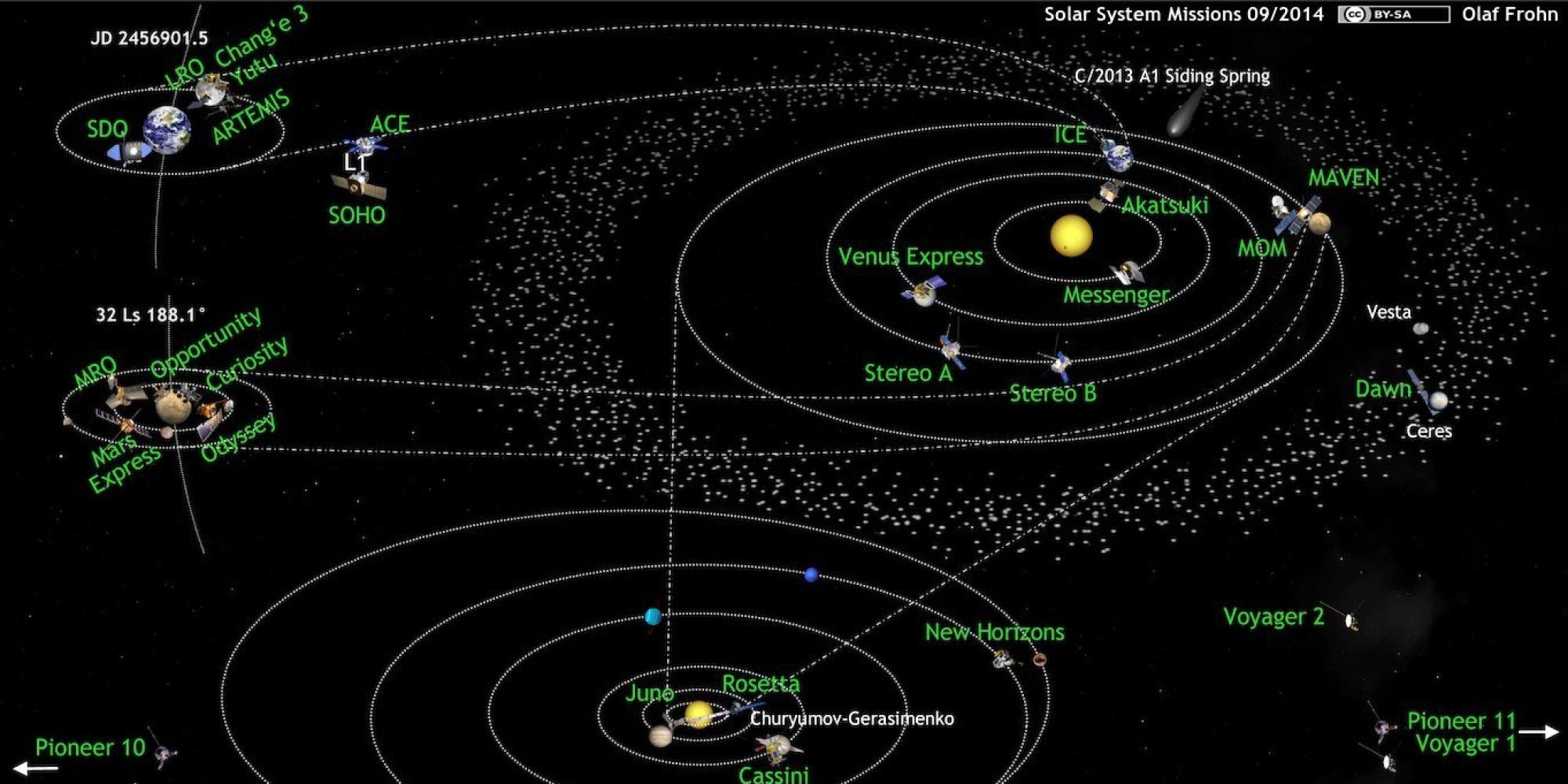
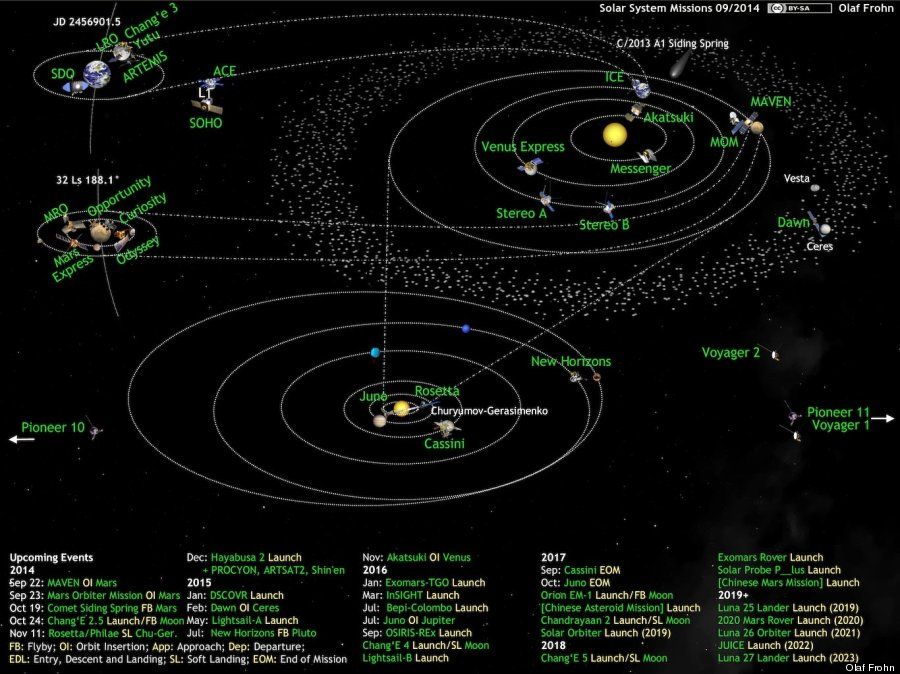 A diagram, updated once a month, of active space missions beyond Earth orbit.
A diagram, updated once a month, of active space missions beyond Earth orbit.